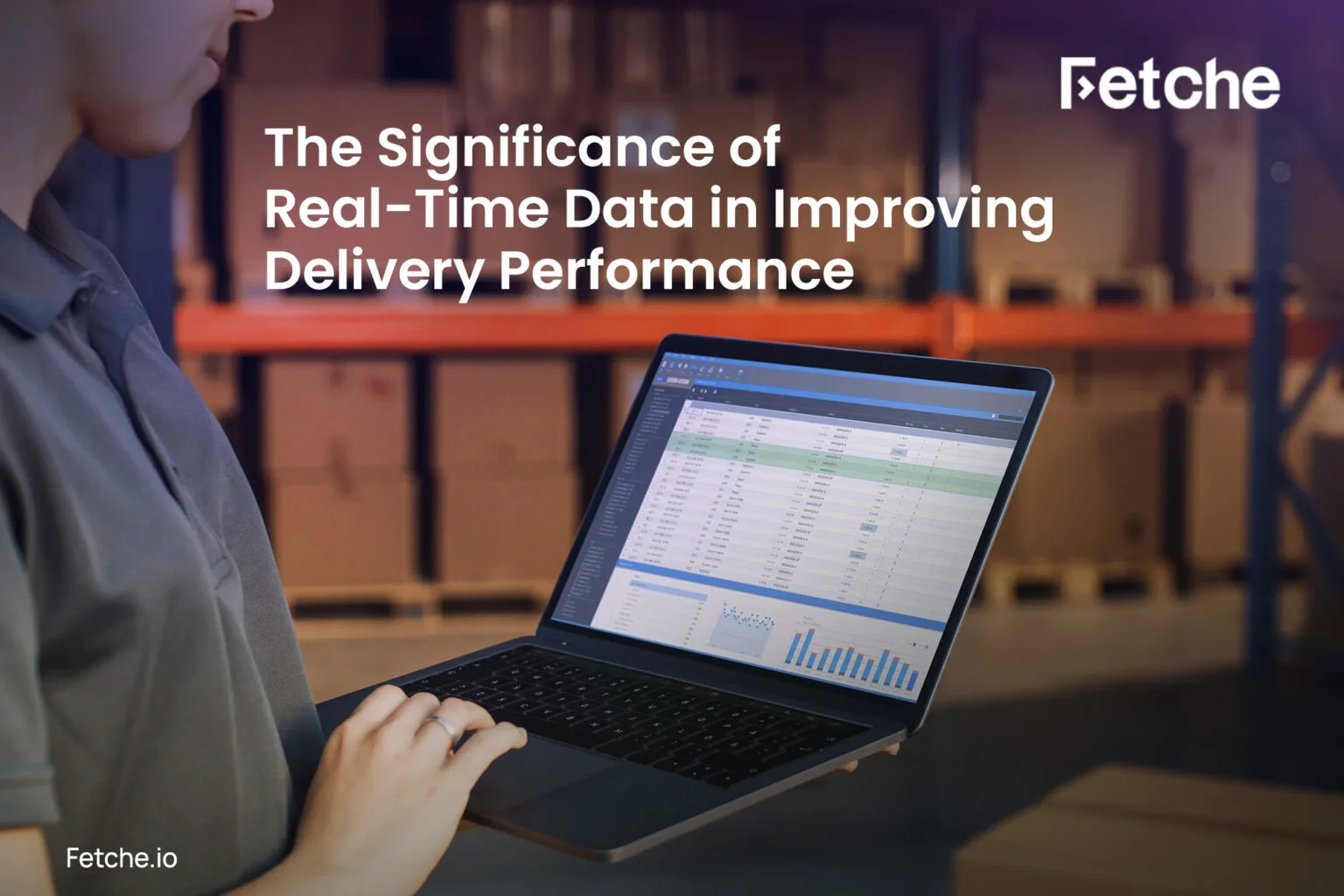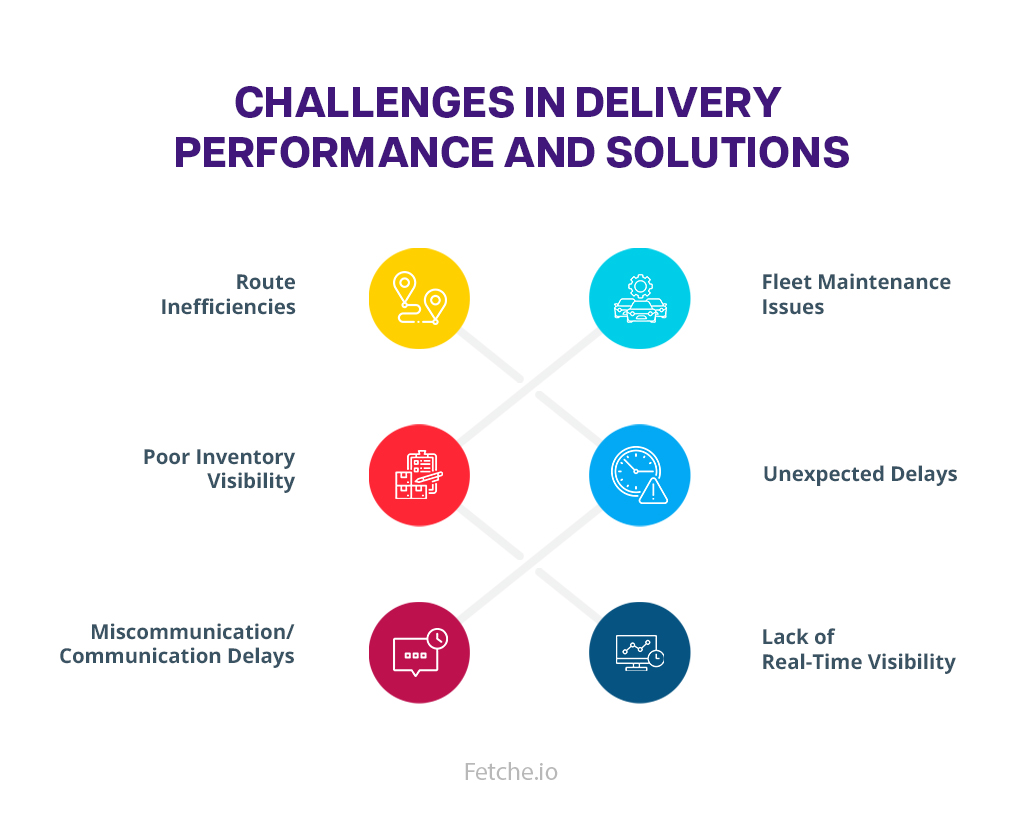
Traditional logistics management is so last decade. Any business can get dragged down by mundane processes and legacy systems. Modern logistics management is centered on the principle of maximum efficiency. The aim is to reduce late shipments, unexpected delays, and poor route planning. And this is only possible with real-time data and advanced logistics software solutions.
Real-time data processing can improve delivery performance, optimize routes, provide instant visibility, and prevent potential disruptions. But is real-time data as important as it is hyped up to be? Is it truly the cornerstone of efficient logistics operations? This blog will answer those questions for you.
What is Real-Time Data in Logistics?
Data is constantly being generated in the logistics industry. Data here could include shipment details, stock levels, traffic data, fleet health information, etc. These data are constantly generated and collected.
So, what if this data was also delivered immediately after collection?
That is real-time data. Real-time data is the info that is immediately delivered after collection. In logistics, real-time data is the immediate flow of information about all logistics operations. This allows you to get live updates on shipments, fleet, and all other operations.
How Real-Time Data Enhances Delivery Operations
Real-time data can positively influence delivery operations. It can prevent delays, lower operational costs, and improve customer satisfaction. But how does this really happen? Let’s take a closer look:
1. Live Tracking of Shipments
Real-time data processing helps you know exactly where a shipment is at any given time. This will also allow you to update your customers. You can provide them with real-time delivery tracking and give them accurate ETAs. This way, they won’t have to guess when their shipment will arrive. All you need to do is implement a modern shipment tracking software.
Benefits –
- Improves customer satisfaction
- Instant visibility into shipments
- Accurate delivery tracking
2. Route Optimization
With real-time data, you can easily optimize your routes. You can reroute deliveries based on multiple factors like traffic, weather, or even road closures. Thus, route planning can help drivers take the best routes, allowing them to complete more deliveries per shift.
Benefits –
- Reduces delivery delays
- Cuts fuel costs
- Saves time
3. Fleet Monitoring
Monitoring your fleet in real-time can be a great advantage. Real-time vehicle data from fleet tracking systems can help prevent breakdowns and improve performance. You can also monitor driver behavior this way.
Benefits –
- Increases vehicle lifespan
- Lowers maintenance costs
- Improves driver accountability
4. Delivery Performance Analysis
The real-time data that you collect can be stored and later utilized. Past data can be collated and analyzed to identify patterns in delivery performance. This can be advantageous in identifying inefficiencies and improving operations.
Benefits –
- Allows you to make informed decisions
- Helps fine-tune delivery strategies
5. Better Communication
Your communication can also be improved using real-time data. Since up-to-date data is available to drivers, warehouses, and other logistics teams, communication is improved. Customers can also be kept in the loop, making the entire process smoother and transparent.
Benefits –
- Better supply chain visibility
- Improves coordination across teams
- Reduces communication delays
- Improves customer experience
Common Challenges in Delivery Performance and Solutions

1. Route Inefficiencies
Route inefficiencies and traffic congestion are major challenges that impact delivery performance. These inefficiencies will also drive up travel time and fuel consumption. This will ultimately drive up operational costs.
Solution – Smart delivery route optimization is the only way to overcome this challenge. Route optimization software/tools use real-time traffic data, weather data, and delivery schedules to determine the most efficient routes. This reduces fuel consumption, minimizes delays, and improves customer satisfaction.
2. Fleet Maintenance Issues
Your fleet is the backbone of your logistics operation. Any unexpected breakdowns can lead to costly delays. Even a single vehicle issue can ruin an entire day’s scheduling.
Solution – You can overcome this challenge by using sensors, telematics, or fleet management software. This will let you track engine health, tire pressure, and fuel levels in real-time. This visibility can help you spot signs of trouble early on. Monitor the real-time data of your fleet and schedule maintenance before a breakdown happens.
3. Poor Inventory Visibility
Your inventory has to be accurate at all times. Any inaccuracies can lead to understocking/overstocking. This will, in turn, lead to missed sales and inefficient warehouse space management.
Solution – A real-time inventory management system can solve this issue. These systems will provide you with real-time data on inventory levels. You will be able to track exactly what’s in stock, where it is, and how fast it is moving. This will ensure accurate order fulfilment.
4. Unexpected Delays
Unexpected delays are more common than you think. You cannot account for all factors in the supply chain. There are always variables involved. This could be weather issues, roadblocks, accidents, strikes, etc. These hard-to-predict disruptions lead to delays and monetary loss.
Solution – You cannot always prevent these disruptions. The key is to minimize damage and take swift action. This can be done using real-time shipment tracking. With real-time data, you will know the second something causes a delay. Take proactive steps. Notify your customers, reroute vehicles, and reschedule deliveries. These actions are all easily possible now with the prevalence of AI in delivery tracking.
5. Miscommunication/Communication Delays
There are a lot of players involved in an on-time delivery solutions company. There are drivers, warehouse staff, dispatch teams, and many more. They all work on different timelines and they work with different tools. This can lead to siloed data where there is no centralized data available. This leads to miscommunication and communication delays.
Solution – The solution is to implement centralized data management. The different teams must work with tools that sync in real time. This will provide visibility for all. This way, decisions happen faster, and deliveries will always be on time.
Without Real-Time Data Vs With Real-Time Data
| Without Real-Time Data | With Real-Time Data |
| Route inefficiencies Risk of understocking or overstocking Vague delivery timelines Decisions based on incomplete information. Customers are not updated Issues are not immediately identified Data silos Poor team coordination | Routes are optimized in real-time Accurate, up-to-date stock levels Accurate ETAs Informed decisions based on real-time data Customers are proactively updated Issues are instantly identified Centralized, live data Smooth team coordination |
Final Thoughts
In the highly competitive field of logistics, you cannot afford to remain slow and outdated. You need to track every shipment scrupulously, optimize every route, and avoid any costly breakdowns. And the way to do this is through real-time logistics monitoring and live data updates. It can give you the clarity and control that you need to elevate your logistics business to the next level.
So, the question is no longer, ‘Is real-time data as important?’ The question is ‘How soon can you use real-time data?’
